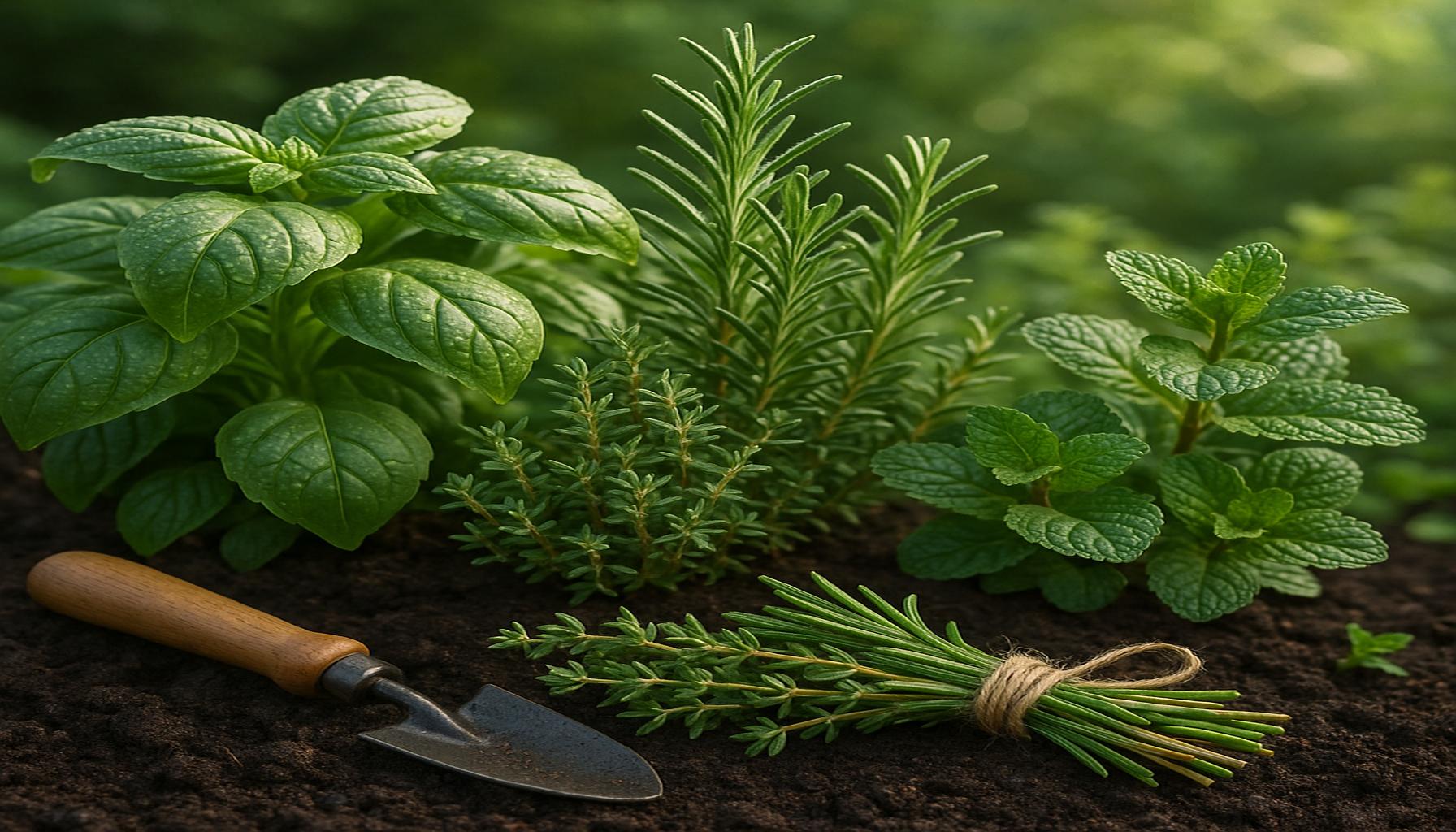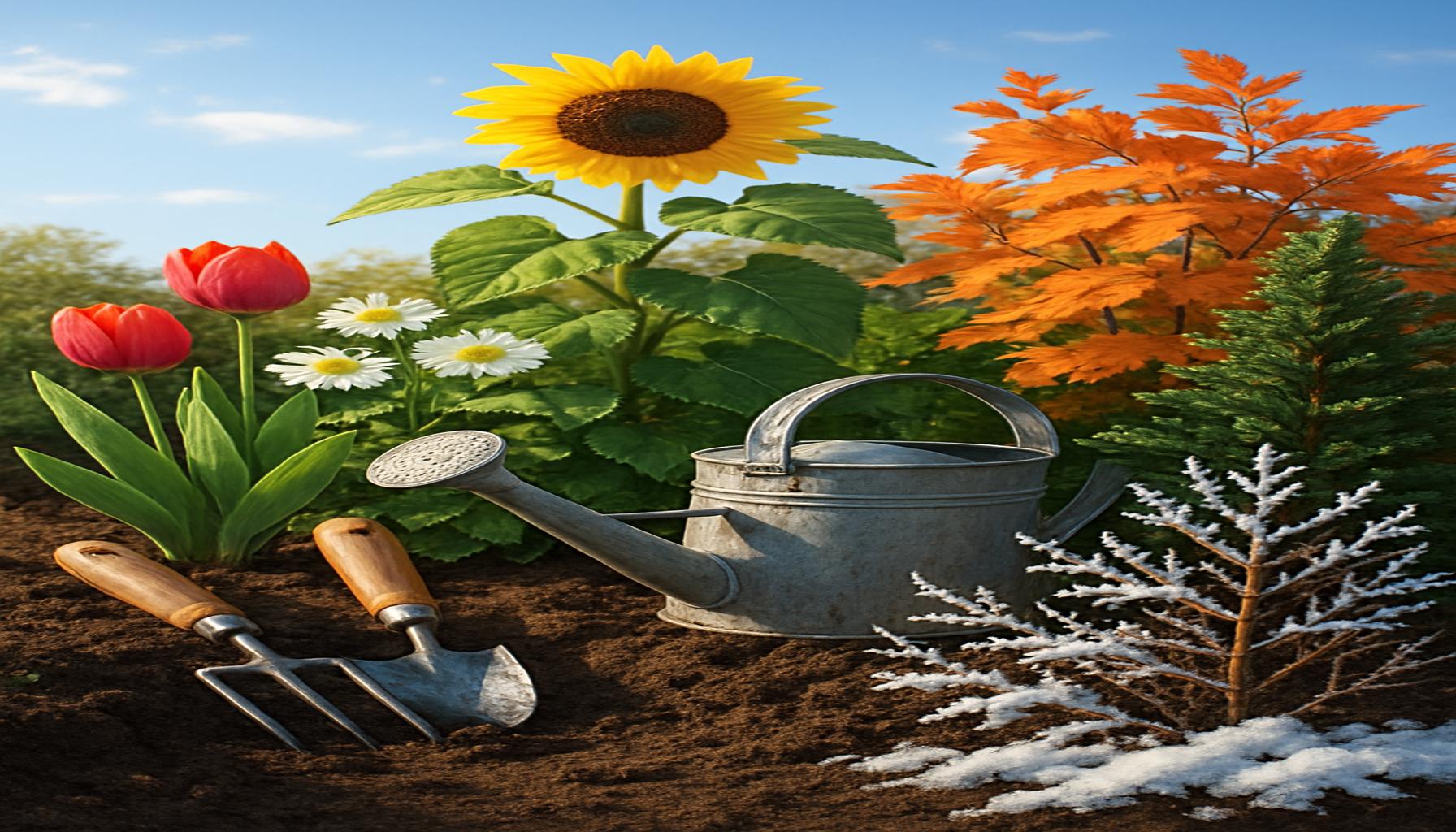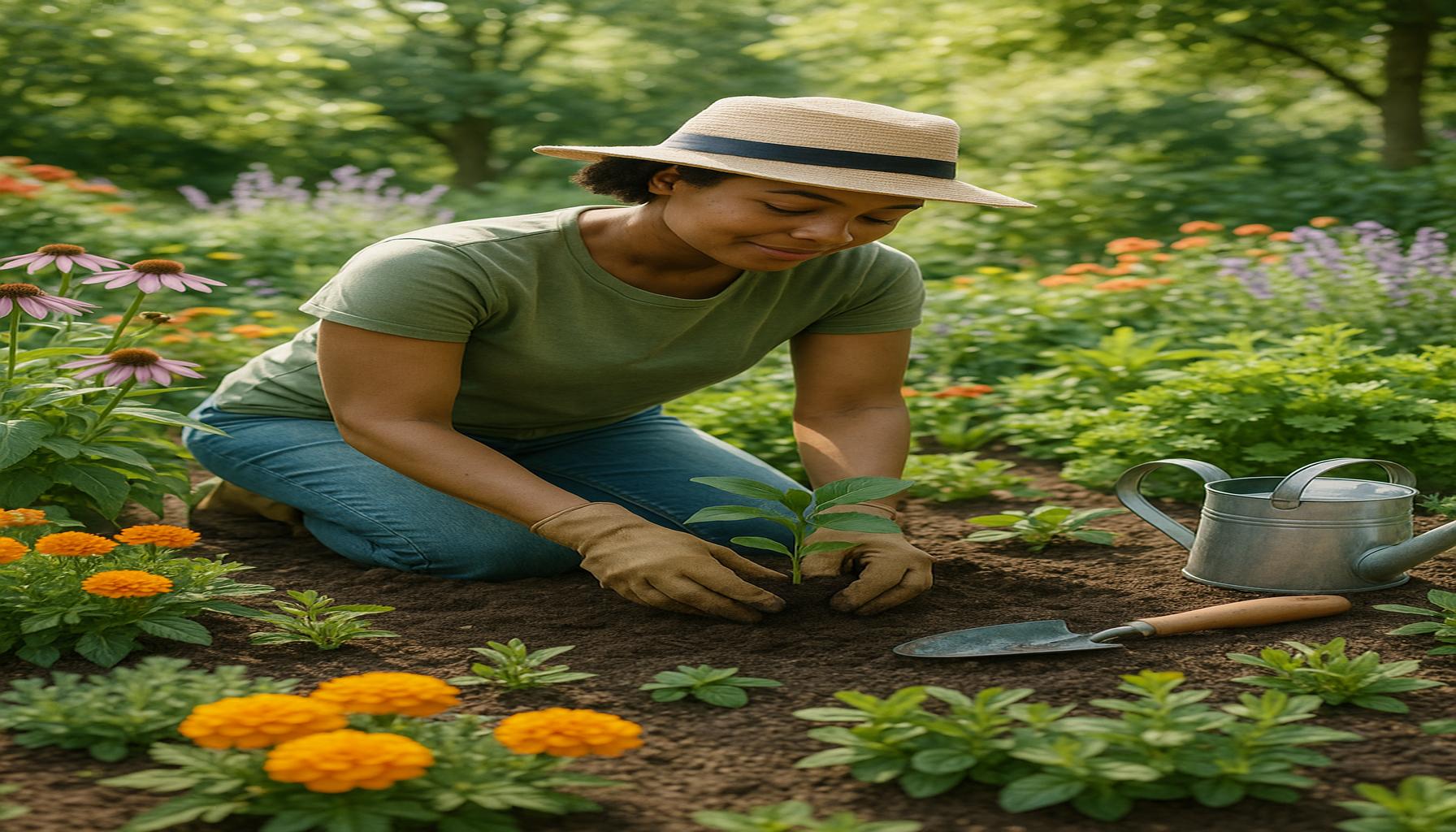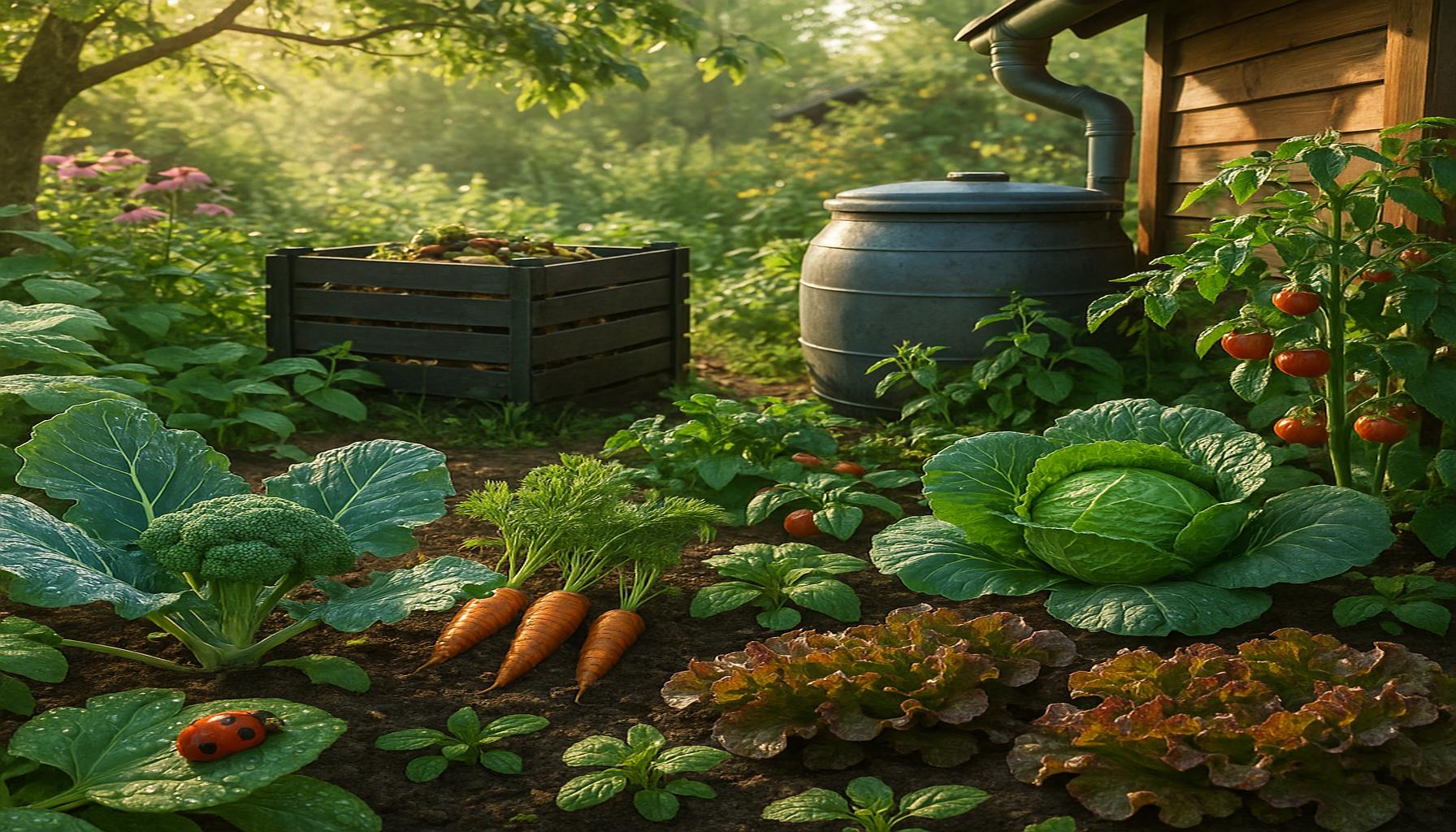Aromatic Plants: Growing Herbs for Culinary and Medicinal Use

Aromatic Plants: Enhancing Flavors and Well-Being
Imagine the rich, fragrant aroma of freshly chopped herbs wafting through your kitchen, heightening the flavors of your favorite dishes. Aromatic plants not only enrich culinary experiences but also boast numerous health benefits, making them invaluable in both culinary and medicinal traditions. The resurgence of interest in backyard gardening, especially during the pandemic, has led many home cooks to reconnect with nature through the practice of growing their herbs.
Growing herbs at home can be a straightforward yet rewarding endeavor. Not only do they provide delightful aromas and flavors, but they are also remarkably easy to cultivate. Here are some popular choices that you can easily grow in pots or in your garden:
- Basil: A staple in Mediterranean cuisine, basil is essential for pesto and pairs beautifully with tomatoes, making it perfect for sauces and salads alike. The sweet, peppery flavor can transform a simple dish into gourmet cuisine.
- Mint: Known for its refreshing taste, mint is ideal for teas, cocktails like mojitos, and desserts, providing a burst of freshness. Its versatility also extends to savory dishes, enhancing lamb and yogurt-based recipes.
- Thyme: This hardy herb offers a robust flavor profile, commonly used in various dishes, from roasted meats to hearty soups. Its earthy notes can elevate the complexity of your culinary creations.
- Chamomile: Famous for its calming properties, chamomile is often enjoyed as a soothing tea. Its delicate blossoms can also be infused into desserts or used in aromatherapy.
- Rosemary: Its fragrant, pine-like aroma makes rosemary an excellent pairing with grilled meats, vegetables, and even baked goods. This herb is not just flavorful; it has been linked to improved digestion and memory.
Beyond their culinary prowess, many herbs offer profound medicinal properties, serving as natural remedies for various ailments. Here are a few notable examples:
- Ginger: Known for its anti-inflammatory effects, ginger is widely recognized for aiding digestion and alleviating nausea. It can be consumed fresh or in teas, and is commonly used in Asian cuisines.
- Turmeric: Celebrated for its powerful antioxidant properties, turmeric contains curcumin, which may contribute to reducing inflammation and boosting overall health. Golden milk, made from turmeric, has gained popularity as a health drink.
- Garlic: Renowned for enhancing flavors, garlic also serves as a potent health booster. Its benefits extend to supporting immune function and promoting heart health, making it a staple in diets across cultures.
From enhancing the taste of your meals to serving as natural health boosters, the journey of growing aromatic plants offers rewarding insights into nurturing both your palate and well-being. Whether you aim to spice up your culinary repertoire or seek natural remedies for everyday woes, the potential of aromatic plants is both vast and inviting. As you embark on this green journey, you may find, not only a satisfying hobby but also a deeper connection with the food you consume and the health you aspire to maintain.
DISCOVER MORE: Click here to learn about sustainable gardening
The Versatility of Herbs in Everyday Life
Growing aromatic plants in your home garden or on your balcony is more than just a trend; it is a way to invite freshness and health into your daily routine. As culinary and medicinal resources, herbs offer a spectrum of benefits that can enhance both flavor and wellness. In particular, herbs have been cherished for centuries for their ability to bring new life to dishes while providing natural remedies for various ailments. But what makes these plants so special?
Aromatic plants thrive in diverse environments, making it feasible for almost anyone to cultivate them. They can be grown in small pots, garden beds, or even herb spirals if you’re feeling adventurous. Understanding the growing conditions suited for each type can lead to a bountiful herb garden, whether you have a sprawling backyard or just a sunny windowsill.
Essential Tips for Growing Herbs
Starting your herb garden requires some knowledge about the best growing practices to ensure that your aromatic plants flourish. Here are a few essential tips that can help you on this green journey:
- Choose the Right Location: Most herbs thrive in full sunlight, needing at least 6-8 hours of direct sunlight each day. Whether you use outdoor space or indoor pots, ensure your herbs receive adequate light to boost their growth.
- Understand Soil Requirements: A well-draining, fertile soil mix is crucial for healthy herbs. Consider mixing compost with potting soil to provide the essential nutrients that plants need to flourish.
- Water Wisely: Overwatering is a common mistake with herb gardening; most herbs prefer slightly dry conditions between watering. Aim to water deeply but infrequently to encourage strong root systems.
- Prune Regularly: Regular harvesting or trimming of your herbs will encourage bushier growth and prolong the life of the plant. Be mindful of the timing, as frequent pruning is most beneficial when plants are actively growing.
- Consider Companion Planting: Certain herbs benefit from being planted alongside others. For example, basil grows splendidly with tomatoes, helping to repel pesky insects while complimenting each other in flavor.
Engaging with the art of growing herbs not only enhances your culinary experiences but also allows for a deeper understanding of the plants you consume. As you journey through this process, you become attuned to their growth cycles and needs, fostering a bond that extends beyond the kitchen. There is something incredibly fulfilling about nurturing a plant from seed to plate, knowing that the fragrance wafting through your kitchen comes from your own efforts.
Moreover, incorporating these aromatic plants into your diet can extend beyond flavor enhancement; they can also serve as potent natural remedies. The healing properties of herbs have been documented throughout history, providing numerous benefits that are worth exploring. Understanding the medicinal potential of the herbs you grow can arm you with knowledge to address minor ailments with home-grown solutions.
As you embark on your herb-growing adventure, keep an eye out for local gardening workshops or community you will learn more about caring for your aromatic plants and have the opportunity to connect with fellow gardening enthusiasts.
The therapeutic effects and culinary versatility of aromatic plants make them an essential addition to any garden. With an increasing awareness of holistic health, people are turning to nature for remedies and flavors that enhance their well-being. Understanding the profound benefits these aromatic herbs offer can inspire gardeners and cooks alike to cultivate their own little green spaces filled with medicinal marvels and flavorful delights.
The Benefits of Growing Aromatic Herbs
Growing aromatic plants provides a direct pathway to enhanced health, culinary creativity, and a sustainable lifestyle. As you nurture these plants, you will not only enjoy their beauty but also harness their numerous advantages:
| Category | Benefits |
|---|---|
| Culinary Use | Enhances flavors in dishes, adds freshness, and promotes healthy eating. |
| Medicinal Properties | Offers natural remedies for ailments; supports overall wellness through herbal infusions. |
By incorporating aromatic herbs such as basil, thyme, and mint into your daily routine, you can discover new flavors and health benefits. Whether using fresh herbs in salads or as components of healing teas and tinctures, the potential is endless. Gardening enthusiasts and culinary explorers alike will find themselves inspired to delve deeper into the remarkable world of aromatic plants.
DISCOVER MORE: Click here to learn about the benefits of music for mental health
The Medicinal Benefits of Herbs
The fascinating world of aromatic plants extends beyond their culinary uses, with many herbs providing powerful medicinal benefits that are gaining renewed interest in modern wellness practices. Throughout history, various cultures have relied on these natural healers not just for taste but for their therapeutic properties. An exploration of specific herbs can illuminate the profound ways they contribute to health.
For instance, chamomile is well-known for its calming effects and is often enjoyed as a soothing tea before bedtime. Its ability to reduce anxiety and promote restful sleep has made it a favorite for those seeking natural alternatives to over-the-counter sleep aids. Another staple, ginger, is celebrated for its anti-inflammatory properties and effectiveness in aiding digestion. Incorporating fresh ginger into your diet, whether in teas or stir-fries, could significantly benefit those struggling with gastrointestinal issues.
Peppermint is yet another versatile herb that serves both culinary and medicinal purposes. Known for its refreshing aroma, peppermint can aid in relieving headaches, digestive problems, and even respiratory issues. These benefits are often extracted in the form of teas or essential oils, offering a dual function of flavoring and healing.
Exploring the Healing Properties of Common Herbs
Learning about the specific benefits of each herb allows you to tailor your garden to your health needs. Here are some popular herbs along with their medicinal uses:
- Basil: This fragrant herb not only infuses dishes with flavor but is also known for its ability to combat inflammation and promote cardiovascular health.
- Thyme: Often used in soups and stews, thyme has antiseptic properties and can support respiratory health by acting against coughs and sinus infections.
- Rosemary: This aromatic herb is not only a culinary delight but also offers antioxidant properties, which can help improve digestion and boost memory.
- Lavender: Renowned for its soothing scent, lavender serves as a natural remedy for anxiety and stress relief, making it an essential addition to your herb garden.
Utilizing these herbs not only enriches your meals but also encourages a holistic approach to health. The convenience of having fresh, aromatic plants at your fingertips can transform how you manage minor ailments. Instead of relying solely on pharmaceuticals, consider integrating these natural remedies into your lifestyle. As an added bonus, many herbs can be easily dried and stored, allowing you to extend their shelf life and benefits beyond the growing season.
Supplementing your growing knowledge of these plants through reading and attending workshops can deepen your understanding. One exciting avenue is the exploration of herbal medicine practices passed down through generations. Additionally, as the herbal renaissance continues to thrive, many local communities now offer classes or events centered on herbalism, providing a platform for learning and sharing.
As you immerse yourself in the aromatic world of herbs, the combination of culinary excitement and medicinal potential enriches not only your diet but your overall quality of life. With each herb you grow and utilize, you’re not only cultivating plants but potentially transforming your health and well-being in informative and delightful ways.
DISCOVER MORE: Click here to dive into sustainable crafting
Fostering Wellness Through Aromatic Plants
In summary, growing aromatic plants such as herbs for culinary and medicinal use paves the way for a richer lifestyle, steeped in both flavor and well-being. As we have explored, herbs like chamomile, ginger, peppermint, basil, thyme, rosemary, and lavender are not merely ingredients to enhance our dishes but also potent allies in improving health. Their diverse medicinal properties—from digestive aids to stress relievers—present a compelling case for integrating these natural remedies into our everyday lives.
As interest in herbalism continues to blossom in the United States, it is worth considering how these aromatic plants can transform our approach to health and nutrition. Instead of merely reaching for conventional medications, harnessing the power of fresh herbs may not only elevate our meals but also enhance our well-being—resulting in a holistic lifestyle that embraces nature’s offerings.
Moreover, engaging in the cultivation of herbs invites a deeper connection to our food sources and promotes a sustainable practice that benefits both our health and the environment. As more individuals embark on this aromatic journey, the potential for community learning and exchange around these treasured plants flourishes.
With each herb cultivated in your garden, you nurture not only the plants themselves but also your knowledge, appreciation, and, ultimately, your health. So, why not take that first step today? Start exploring the aromatic world of herbs and unlock their incredible potential for culinary delight and medicinal wisdom.


